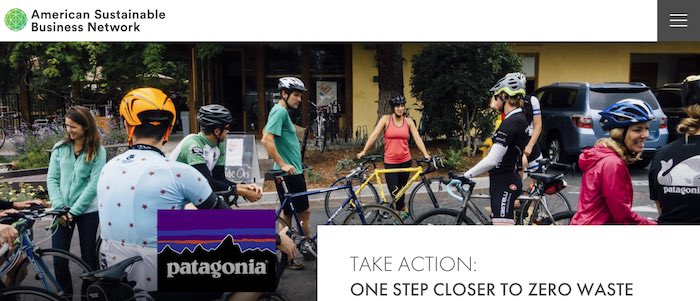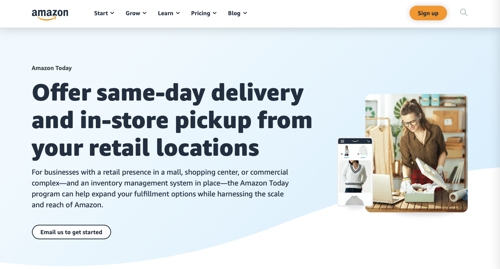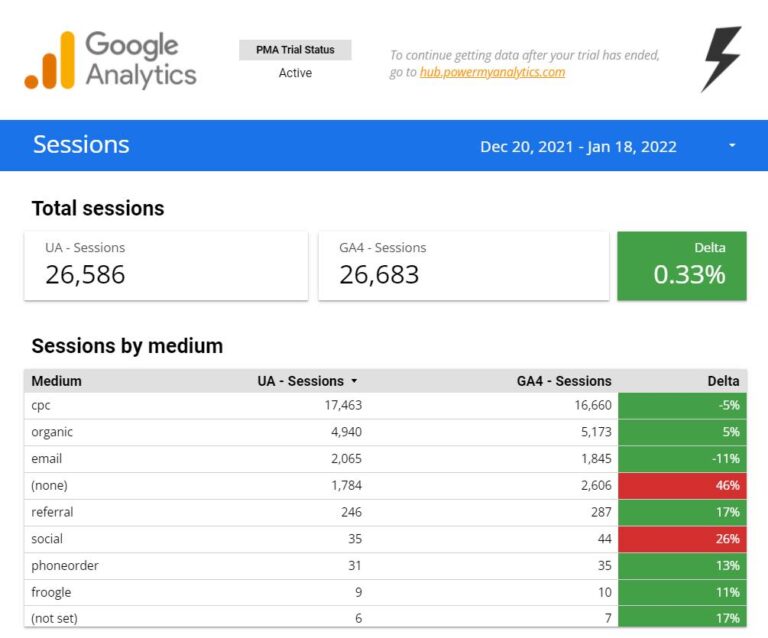Three ways influencer marketing is evolving in 2021
A well-thought-out investment in virtual KOLs has the potential to pay dividends for brands marketing in China. Luxury brands, for example, have been embracing virtual KOLs in various ways, and the combination makes sense: if your brand is built on a highly stylised, idealised image, why shouldn’t your spokesperson also be? Luxury brands also have considerable motivation to present themselves as digitally-savvy and court a younger generation of shoppers.
For overseas brands marketing to China, virtual KOLs can help consumers to connect with the brand’s products via an established persona – but because the ‘actions’ of the characters will be solely under their control, there is a lot for the brand to think about (and potentially room for error). For this reason, a campaign with virtual KOLs is probably more suitable for brands that already have some experience in marketing to China.
How do virtual KOLs work?
Despite the particular popularity of virtual KOLs in China, they also have some limitations that are specific to the Chinese market. In China more than in the west, consumers place a high amount of trust in KOLs and their recommendations about which products to buy. Trust in brands themselves is much lower due to a history of high-profile scandals and scams; so KOLs form a key part of the decision-making process in evaluating a product’s merits. But how much can an endorsement from a virtual character count for? As Deng Xinyue, a fan of Hatsune Miku, who is a Japanese virtual idol that uses the same voice synthesiser software as Luo Tianyi, told the Global Times,
Xiaohongshu (Image: rafapress / Shutterstock.com)
“I watch livestream shopping promotions because I trust that whoever is endorsing the product has used it themselves. Yes, I spend a lot on virtual idols, but mostly on merchandise directly related to the idols, not some random eye creams they can never use on themselves.”
While virtual performers like K/DA and Luo Tianyi might seem to fall more into the category of musicians rather than influencers, the boundaries between entertainment and marketing or commerce are frequently blurred in China, where videos and livestreams are designed both to entertain and to be shoppable, and shopping festivals like Singles’ Day host livestreaming events and music performances.
You can be forgiven for wondering how exactly brands are meant to partner with an influencer who doesn’t have a presence in the physical world. Western virtual influencers like Lil Miquela or KFC’s virtual Colonel Sanders tend to primarily post content to Instagram (much like many flesh and blood influencers), and many virtual KOLs in China similarly have presences on social platforms like Xiaohongshu (Little Red Book, or RED in English), where Ayayi made her debut in May this year. However, thanks to the varied online landscape in China, there are more diverse partnership and content creation opportunities available for virtual KOLs, depending on the type of KOL that a brand wants to work with.
China’s Generation Z now makes up the largest group of internet users in China, and along with the slightly older Millennial generation, is a digitally adept generation that is highly familiar with technology, the internet and all things virtual. This is one of the reasons why virtual KOLs may appeal to this generation in particular: to them, virtual KOLs are just another type of celebrity, and virtual idols just another type of performer. If they produce entertaining, engaging content, it may not necessarily matter that they aren’t real.
Examples of luxury partnerships with virtual KOLs include Tmall appointing Noonoouri, a large-eyed and slightly cartoonish virtual model, as the ambassador for its luxury platform, Tmall Luxury Pavilion; Noonoouri also took over Dior’s Instagram account for two days in 2019 to promote its Cruise collection. For Qixi (or Double Seventh) Festival 2020, Givenchy partnered with local fashion media outlet SuperELLE for a campaign that starred virtual boy band The Futurer from mobile game Honor of Kings, in which the band members were styled with garments from Givenchy’s ready-to-wear Qixi collection.
For brands and platforms in China, or that market to China, creating or partnering with a virtual KOL therefore seems like a golden opportunity to reach and engage with a younger generation. McDonald’s China has reportedly recently adopted a virtual mascot called “Happy Sister” in a bid to make its brand more appealing to younger consumers. Virtual KOLs are given values that are thought likely to resonate with a young audience: L’Oréal’s Mr Ou, for example, is a French-Chinese entrepreneur working in the beauty industry (of course) who is concerned about the environment and sustainability.
While virtual KOLs are still a niche element of one area of marketing in China (influencer marketing), they offer a variety of interesting opportunities for brands that are savvy enough to employ them effectively. They won’t be replacing real KOLs, who are still ultimately able to offer more authenticity and better engender trust, any time soon; but we may well see more brands turning to both for different types of campaigns, using virtual KOLs to represent their brand, and even creating content that straddles the divide between physical and virtual.

What is the appeal of virtual KOLs – for both consumers and brands?
This suggests there are limits to the type of products and brands that a virtual influencer can realistically be called upon to endorse. Fashion is all very well, as virtual KOLs can be styled to appear as if they are wearing the products in question (and may even influence the design of unique pieces), but cosmetics or food may be best left to a human influencer. The trust component also raises questions of how much credibility a brand-created virtual influencer like L’Oréal’s Mr Ou or Florasis, a virtual persona created by the Chinese makeup brand of the same name, can offer; they may be able to present a more human, accessible face for the brand, but not be able to achieve as much cut-through as a partnership with an external influencer.
While not all KOLs will necessarily have the resources or the platform to do what Angelababy did, this approach could catch on among China’s more famous KOLs as they use the approach to fit in more opportunities, give their real selves a break, or explore the creative possibilities offered by virtual outfits and digital imagery. And for brands, partnering with the virtual version of a real KOL could be a way to get the benefits of both virtual and real KOLs in their campaign.
Sometimes, the mere existence of a virtual KOL is enough to spark interest in a brand, if they have a well-thought-out persona. One of China’s earliest ‘home-grown’ influencers was Poka, created by digital magazine Voicer. An ‘intern’ at the magazine, Poka was introduced via an ‘interview’ about her favourite foods and fashion trends, and Voicer even gave her an “illustration and words” credit on one of its articles, published in March 2019. Poka thus became a window into the magazine’s work and its areas of focus. More recently, Tsinghua University introduced its first ever virtual student: Hua Zhibing, created by the Department of Computer Science’s Knowledge Engineering Laboratory. While primarily a learning AI, Hua also has an appearance, personality and interests, and has ‘enrolled’ at the Department of Computer Science and Technology, helping to promote the university’s “profound tradition of computer science”.
The Futurer have a huge social following among female consumers, making them a smart choice to front Givenchy’s campaign, and the collaboration’s Weibo hashtag gained close to 90 million views, with a repost from Honor of Kings’ official account. However, some netizens reportedly criticised the homogenous look of the band, suggesting that Givenchy could have done more to lean into the characters’ unique style, perhaps by designing them some dedicated outfits.
Domestic brands in China have been partnering with virtual KOLs like Luo Tianyi for years; in 2017, for example, Chinese skincare brand Pechoin collaborated with Luo Tianyi to produce a themed cosmetics series made available for pre-order on Tmall, with a giveaway of five special gifts available to anyone who shared the Weibo post and tagged three friends. More recently, the technology has evolved and become more accessible to the point that brands have a greater diversity of characters to collaborate with, and are better-placed to create their own.
If anything, there is an indication that the less realistic a character, the more it will appeal to young consumers. WWD reported that Tmall’s Aimee, whose design is extremely lifelike, “didn’t get much visibility” after her launch; Tmall later went on to design a much more overtly animated character, Maojiang (meaning “Miss Kitten”), who has cat ears that match Tmall’s black cat mascot. “One can argue that her more animated features appealed more to the platform’s audience than Aimee’s realistic posture,” speculated Tianwei Zhang. When L’Oréal released Mr Ou, its second virtual ambassador for the Chinese market, it deliberately modelled him after characters from the popular mobile dating simulation ‘Love and Producer’.
One brand known for having a particularly sophisticated virtual KOL strategy is beauty brand Perfect Diary, which set up hundreds of WeChat groups fronted by its virtual KOL Xiao Wanzi to share special offers, new product launches, and beauty advice with consumers. Perfect Diary went on to develop a product line for Xiao Wanzi, Abby’s Choice (after Xiao Wanzi’s English name), which is sold exclusively through WeChat. Abby’s Choice has a dedicated mini program (an app within WeChat) for selling the products, which is only available to customers who join one of Perfect Diary’s WeChat groups, or receive a link from a friend; despite this niche audience, livestreams held through the mini program average 60-70,000 viewers per stream, according to Jing Daily, with hundreds of comments on the beauty and skincare content available within the program. Perfect Diary has created two additional virtual KOLs, Minmin and Susu, who co-host streams with Xiao Wanzi.
The drawbacks
It will come as little surprise that virtual KOLs appeal to a primarily young audience. A 2019 report by video platform iQiyi found that 64% of 15-to-24-year-olds in China were followers of virtual idols (performers like Luo Tianyi), a percentage that is sure to have increased in the years since.
Finally there is the question of cost: despite being entirely digitally-generated, some of the best-known virtual KOLs come with an enormous price tag, with the fee for partnering with Luo Tianyi known to eclipse even that of China’s most famous flesh and blood influencers like Li Jiaqi. This doesn’t necessarily make the world of virtual influencers any more accessible to smaller brands than that of human influencers. And while brands can always create their own persona, this still requires a significant long-term investment of time and resources in the character, which brands would have to be sure is worthwhile.
Virtual personas have even opened up new possibilities for flesh and blood KOLs to expand their presence. Chinese KOL Angelababy made an appearance at the Dior Pre-Fall 2021 show during Shanghai Fashion Week in virtual form, via a highly detailed avatar called Angela 3.0. According to Dao Insights, “After the show, virtual Angelababy recommended the Dior lipstick she wore during the show on her newly created Weibo account. Many of Angelababy’s followers commented that they liked the creative approach and thought that her outfit would also suit the real Angelababy.”
It’s tempting to view the virtual KOL trend in China as a bandwagon that brands are jumping on in the hopes that it will magically generate popularity with Generation Z. And while it’s true that brands need to carefully think through the pros and cons of using virtual KOLs and not approach them as a silver bullet, the same is true of any marketing channel or tactic.
Do marketers really know how big China’s influencer economy is?
How virtual KOLs benefit brands in China
For example, virtual idol Luo Tianyi has co-hosted shoppable livestreams on Taobao with Li Jiaqi, also known as the “lipstick king”, one of China’s most famous human KOLs. The first livestream in April 2020 reportedly encountered some technical difficulties, but a subsequent stream in May 2020 pulled in three million viewers. Taobao’s spin-off B2C marketplace, Tmall, has its own virtual KOL in the form of Aimee, who made her debut during the 11.11 or Singles’ Day shopping festival in 2019. During Shanghai’s first online-only fashion week in February 2020, Aimee modelled Prada’s spring collection in a series of pop-up posters. Another group of virtual characters, League of Legends girl group K/DA, ‘attended’ Shanghai Fashion Week in October.
Did you spot us at Shanghai Fashion Week? @shanghai_fw#KDA #SHFW pic.twitter.com/s6ZPIevVwb
Combine this with the increasing popularity of online performances and virtual concerts thanks to Covid-19, and it’s easy to see why many brands are turning to digital stars to expand their reach and appeal. Last August, Burberry collaborated with fashion, entertainment and music publication Nylon China, rapper Victor Ma and two virtual KOLs, Xiaobing and He Chang, to produce hip-hop single ‘Runway 2.0’. According to Jing Daily, the song was “Inspired by Burberry’s TB Summer Monogram series and elements from the brand’s summer campaign” and “emits a chill, summery vibe”. A week after its release, the video had already reached 2.1 million views and more than 51,000 likes on Weibo, and viewers could also create and listen to customised music in the “Burberry Party Room”.
But what is it about virtual KOLs that is so compelling, and how are organisations working with them? In this article, I’ll take a close-up look at China’s burgeoning virtual KOL space and consider what it has to offer to brands, both domestic and overseas, that market to China.
In the west, virtual influencers – digitally-generated characters who exist only online, though their followings and fanbase are very real – still have the aura of something that is niche and futuristic. But in China, virtual Key Opinion Leaders (or KOLs) are an increasingly popular way of connecting with audiences, particularly young audiences.
In some ways, the popularity of virtual characters – some of whom are from existing gaming or animation franchises, meaning that they come with a built-in fanbase – is an outgrowth of China’s huge and thriving anime, comics and gaming (ACG) industry, which in Beijing alone grew by 30% in the first half of 2020 to more than 50 billion RMB (around US .47), according to official statistics. However, even in countries with a smaller ACG market, creating deliberately unrealistic virtual influencers can help in overcoming the ‘uncanny valley’ effect, in which people find something unsettling precisely because it seems too human.
Reggie Ba-Pe, co-founder of entertainment agency Club Media, who has created a virtual KOL called Maie, told WWD that Chinese audiences need, “peers they can grow with, and aspirational identities that empower them”. He believes that “virtual humans” can achieve this and “play an important role in filling the void for brands trying to appeal to China’s largest demographic of consumers — Gen Z.”
Brands can partner with a hyperrealistic “meta-human” like Ayayi, created by Ranmai Technology; a ‘virtual idol’ like digital performer Luo Tianyi; or even a character from an existing franchise like a mobile game. Or they can create their own, as many brands – including western brands who market to China – are now opting to do.
— K/DA (@KDA_MUSIC) October 27, 2020

Other advantages of virtual KOLs for brands include their brand safety: unlike humans, they can be relied upon to never make a mistake or cause a controversy that will be damaging to their partner brands. Having said that, there is still the potential for embarrassing glitches, as evidenced by the first live commerce stream with Luo Tianyi and Li Jiaqi, which suffered from technical issues. Virtual KOLs are also available 24/7 and never tire (or decide to take a break, or change career), won’t age, and overall are guaranteed to remain as perfect as their original design.






